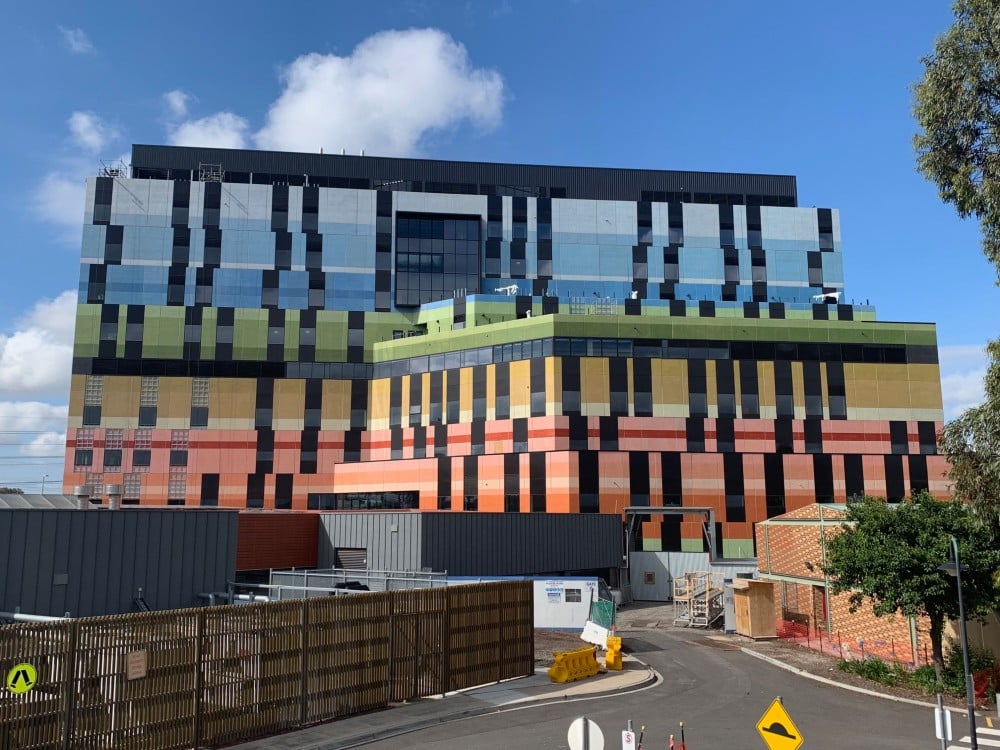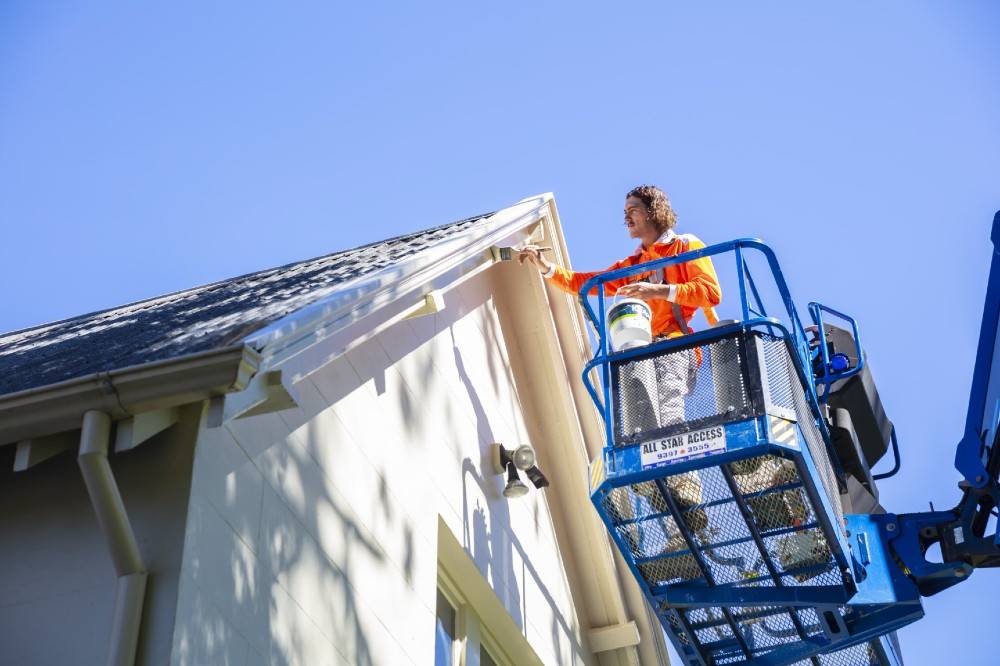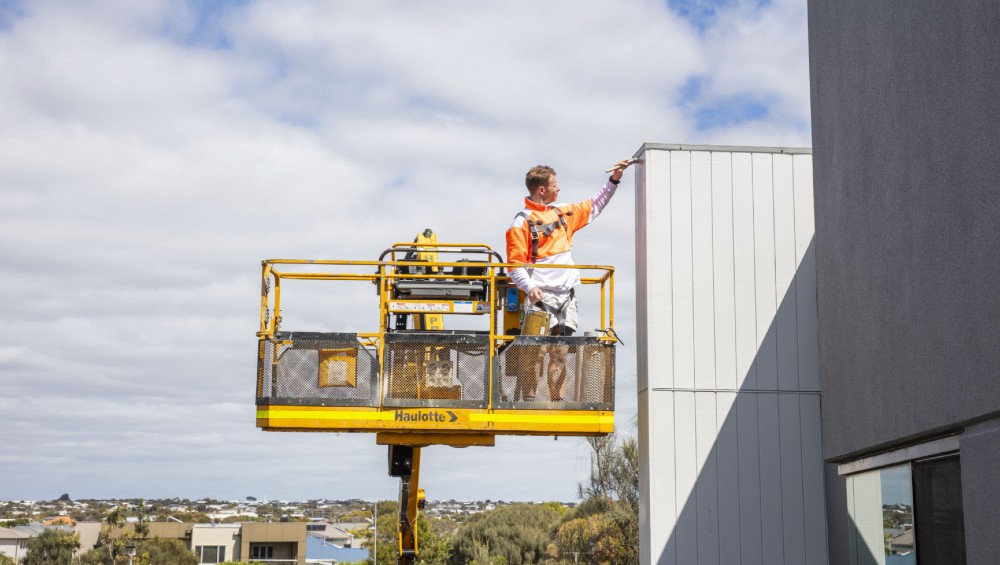Property and facilities managers often grapple with the challenges of balancing painting costs with the need to uphold the presentability and safety of their property. Not only do you have to meet the expectations of stakeholders, or comply with regulatory boards, but you also need to ensure the ultimate experience for the people that occupy your property – all while sticking to your bottom line.
Unfortunately, understanding the cost of commercial painting projects can be challenging when different quotes have vastly different prices, or when requirements vary so greatly from one property or project to the next. That’s why it’s critical to know what factors influence commercial painting prices and quotes if you want to achieve a high-quality and cost-effective paint finish for your building.
Having a complete picture of your expected commercial painting costs from the outset will help you reduce the risk of missing details from your scope, limited visibility of timing and deadlines, or a lack of prior experience in your contractors. All these situations can result in an unsatisfactory job, wasted time and blown-out costs – not to mention the unwanted stress that goes into abating these issues or the potential threat of non-compliance with building standards.
So, how do you recognise a good quote that meets the requirements of your commercial property at an affordable price? To answer this question, let’s first take a look at what actually impacts the cost of commercial painting.
There are a range of different factors that have a bearing on how much your commercial painting project will cost. That’s why as a property or facilities manager, it’s best practice to be clear on the scope of work involved and everything that should be included in a quote right from the beginning. This will help you avoid hidden costs along the way. Here are eight factors that will influence the final quote for your project.
While the paint itself is one of the smaller items contributing to your overall commercial painting costs, it is the most enduring aspect of your project. Even though high-quality paints and specialised coatings may cost more at face value, they deliver a much better finish. This includes protection against elements such as corrosion, marine and industrial environments, weathering, graffiti removing chemicals, impacts or abrasion. Investing in durable paint products that are long-lasting can also reduce the frequency at which painting and maintenance work needs to be done, which can save you lots of money (and time) in the long run.
The condition of your building’s surfaces also plays into the cost of commercial painting. Your contractors may need to clean or treat your structural materials first, or they could be ready to repaint straight away. Beyond that, the number of coats of paint also needs to be considered. If you’re planning a dramatic colour change, more coats will be needed than what’s required for a simple refresh of your existing colour scheme. Similarly, the type of surface and the type of paint also affect coverage, with some options requiring more coats to achieve a good finish. In this case, not only will the volume of paint required increase, but so will the work hours needed to apply it, both of which impact your final cost.
If you want to infuse a bit of creativity and come up with a unique paint design for your property, this will influence the cost, depending on the complexity of the work required. This doesn’t mean you should rein in your creativity, though, as the finished product could help set your building apart from competitors and attract new business opportunities.
Commercial painting contractors may need to use specialised equipment to access parts of your site or minimise the risk to patrons or tenants, especially if your property needs to remain operational throughout the project. Access equipment will naturally increase the cost of commercial painting work, but ensure that your project is completed in a safe and timely manner – not only for the workers but also for your stakeholders. Another consideration to keep in mind is the costs involved in acquiring the necessary permits to access rails, footpaths, powerlines, roads or other public areas around your property.

If your property hasn’t been properly maintained, then chances are that your commercial painting costs will increase. Issues like concrete cancer, foundation failure, efflorescence, leaks, lead paint or water damage can all affect the structural integrity of your building. Plus, these problems can also threaten the health and safety of those who occupy it, as well as the longevity of your new paintwork if not addressed properly before repainting. That’s why it’s critical for your contractors to conduct a site visit to understand the extent of your maintenance problems and include this in their final quote and scope of work, accordingly.
It might not always be possible or preferable to conduct paintwork within normal working hours. One of the benefits of working with a larger painting and maintenance company is the flexibility to complete the project after hours. While this generally does increase commercial painting costs, as contractors must be paid to work outside normal business hours, it does vastly minimise the disruption to your tenants. Additionally, the benefit of allowing businesses to continue as usual will often make the additional cost worthwhile.
A special level of care is required when painting heritage buildings. This is because contractors need the knowledge and expertise to exercise greater caution when working on older structures to ensure that the property’s historical value is maintained. For example, your contractors may need to understand requirements such as approved colour schemes, maintaining earlier paint layers, and working with lead paint or asbestos. This type of knowledge comes at a premium, however, it also provides you with the assurance that you’re employing contractors who can guarantee meeting the relevant standards for work on your heritage property.
Of course, the project scope is a major determinant of the cost of a painting project because of the volume of product that’s required and the amount of labour involved. Whether your property requires an internal or external repaint or both, the more surfaces that need painting, the more hours are needed to complete the job safely and to a high standard. That’s why it’s important to get the scope right from the beginning so that there are no unexpected costs later in the project due to the scope changing.
Now that you know all the factors that impact commercial painting prices, let’s explore how to ensure these costs don’t blow your budget.
Unsurprisingly, commercial painting costs can quickly add up if they're not properly planned and budgeted for. Here are three key ways to keep your painting costs for your property in-budget:
Before you start looking for quotes and commercial painting contractors, it’s important to conduct a thorough assessment of your property so you can prioritise the most pressing work. Additionally, a proper assessment can save you from doing unnecessary paintwork, where a wash or clean would’ve been perfectly sufficient.
It’s best practice to compile a full, detailed list of all the painted areas in your property and gauge the level of attention each area requires. Try dividing your property into three categories: surfaces that require urgent maintenance, surfaces that need minor touch-ups and areas that don’t need to be tended to until months or years down the track. Asking maintenance staff, board members and tenants for feedback can also help ensure that you’ve covered all bases and included all necessary painting work.
While it may be tempting to go with the cheapest quote, this often comes back to bite you, usually in the form of paint deterioration and other maintenance issues that lead to more frequent repaints. Instead, look for expert painting contractors whom you can trust to deliver a professional, long-lasting finish that will save you money in the long term. Contractors that can provide you with a quality and workmanship guarantee will give you the reassurance you need that you’re getting value for money.
The right contractor will include all the necessary details in their painting quote from the get-go, giving you confidence that they’ll also deliver on your project’s objectives. A comprehensive quote should include a clear breakdown of commercial painting costs from start to finish. When you request a commercial painting quote, be sure to get all of the following information in writing to ensure that everyone is on the same page:
Liaison arrangements, such as an on-site foreman, are necessary to ensure consistent communication throughout the painting project. The last thing you want is for a painting contractor to accept the job and then forget to keep you in the loop. You want to make sure the contractor is on top of things and committed to finishing the job to the highest standards. That’s why appropriate liaison arrangements need to be defined in your quote to ensure you know that you will be getting regular updates throughout the project.
When it comes to painting properties, minimising disruptions for everyone involved is key, so your contractor should demonstrate flexibility and reliability. A detailed timetable should be included with your quote and must show that work can be completed within the timeframe you require. This could include completing work outside of your building's core operating hours, incurring additional costs that should be noted in your quote.
Then, of course, there’s the final price. Your contractor should supply a quote to give you oversight of the whole project cost and leave you feeling assured that there will be no hidden extras. Make sure that it’s crystal clear whether or not the final quote is inclusive of all labour, equipment and materials, as well as any inclusions of payment agreements.

Preventative maintenance plans are typically the most cost-effective solution to managing commercial painting costs over the long-term. Here are three reasons why you should consider taking a preventative approach.
First impressions matter, and well-maintained properties have a higher market value than those which aren’t as well looked after. The appearance and presentability of your commercial buildings are important to your business. If your premises look tired, run-down or neglected, even a brilliant reputation will eventually tarnish. Ill-maintained surfaces negatively influence external attitudes, from those of potential investors, patrons and students, to existing tenants, residents and stakeholders. What’s more, a well-kept building instils confidence in all parties and can uplift your business’ profile and reputation.
Regular, smaller repairs or maintenance work are much more cost-effective than major refurbishments and repaints to damaged buildings. In addition, keeping on top of painting requirements ensures warranties are honoured, as leading, reputable contractors do annual site visits to ensure any faults or issues are dealt with before they become an issue. On the other hand, most contractors who complete ad hoc work aren’t contractually obliged to return. Implementing a preventive maintenance plan means that you can keep your commercial painting costs down by avoiding expensive overhauls of neglected buildings or emergency maintenance.
When major works are done across the entire property once every several years, this often results in huge inconveniences and common areas being inaccessible. Depending on the level of work required, tenants may even need to temporarily vacate the property altogether. With a regular maintenance approach, areas are addressed progressively in smaller increments, meaning less intrusive repair work and much fewer disruptions.
Now that you’ve learned about all the factors that influence commercial painting prices and the necessary components of a good quote, it’s important to partner with reliable and experienced contractors who will help keep your costs down while ensuring the best quality finish.
At Higgins, we’ve been in the business of commercial painting in Australia for over 74 years. By partnering with us, you can rest assured that you’re choosing expertise and professionalism.
Our unrivalled attention to detail paired with our world-leading accreditations demonstrate our commitment to high-quality service and safety, as well as the cost-effective delivery of commercial painting projects.

What do you get with Higgins?
Comprehensive painting and maintenance solutions that are tailored to your needs by local, on-the-brush experts.
A steadfast commitment to WHS, quality and environment with an industry-leading ISO tri-certification.
A family-run business with strong family values. Committed to local communities, their significant buildings and their people, Higgins cares more about the outcome.
1/297 Ingles Street
Port Melbourne VIC 3207